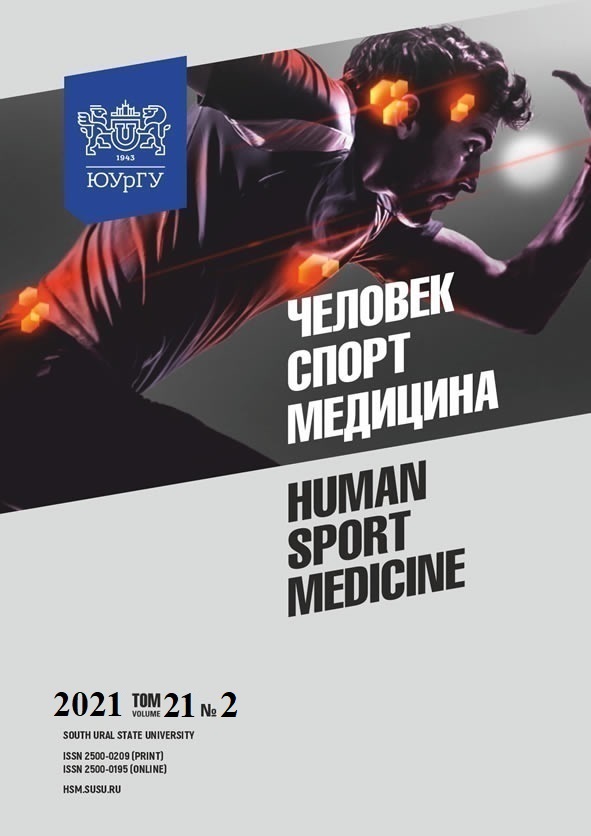CHOOSING EXERCISES FOR STRENGTH TEST IN CROSS-COUNTRY SKIERS
Abstract
Aim. The paper aims to justify the choice and significance of strength exercises for testing cross-country skiers. Materials and methods. Fourteen male cross-country skiers aged 16–24 participated in the study. Athletes were offered to perform the following strength exercises: 1. Bench press (BP), 3 rep max (RM); 2. Bench pull (BP2), 3 RM; 3. Bulgarian split squat (SS), 3 RM; 4. Back-leg-chest force measurement with a dynamometer (DM). For the purpose of the study, 70 sources of scientific and methodological literature were analyzed (PubMed, Embase, Cinahl, elibrary, ResearchGate databases). Body weight and muscle mass data were obtained with the Tanita ВС-418 МА body analyzer. Results. A proportional increase with age and skills enhancement was recorded in terms of body weight, muscle mass and strength with the best dynamics in post-puberty. The difference between the youth and junior groups in BP was 12.14% (p> 0.05), between juniors and adult athletes – 1.83% (p > 0.05). In BP2, the difference between groups was 10.10% (p > 0.05) and 2.94% (p > 0.05), respectively, in the split-squad test the difference was 19.72% (p < 0.05) and 14.51% (p < 0.05), in DM – 13.23% (p > 0.05) and 1.44% (p > 0.05). The correlation analysis shows the most significant correlation between BP and BP2 (r = 0.79), which indicates an increase in the role of the muscles responsible for shoulder joint motion.
The relationship between DM and SS exercises was r = 0.59, which determines the importance of the muscles responsible for pelvic joint and knee joint motions. The correlation of r = 0.53 between DM and BP2 indicates the significance of back strength during isometric exercises. The correlation of r = 0.52 between BP2 and SS assumes the synchronization of a pushing and knee-dominant movement in double poling. Conclusion. The study shows that the choice of strength tests corresponds to both the competitive exercise in cross-country skiing and the safety of performance. Strength tests will allow to develop a rational and effective strength training program taking into account the patterns of movement and neuromuscular system.
References
References on translit
Copyright (c) 2021 Human. Sport. Medicine

This work is licensed under a Creative Commons Attribution-NonCommercial-NoDerivatives 4.0 International License.















